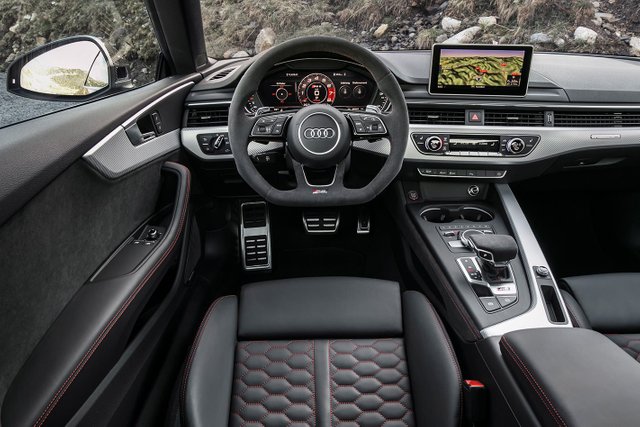
Audi’s monster version of the new A5 coupe. It’s powered by a furious twin-turbocharged V-6, fitted with a rear-biased all-wheel-drive system, and comes wearing a wide body that evokes, for some of us, the original Sport Quattro rally cars. For the first time, there will be a four-door RS5 Sportback; the RS5 cabriolet is gone. Europe gets an RS4 Avant with the same powertrain, but due to the U.S. market’s aversion to wagons, don’t expect it to appear on these shores.
With launch control, the new RS 5 boasts a claimed 0-60 mph time of 3.7 seconds—and it felt every bit that fast during our blastoff. Considering you have 444 hp and 443 lb-ft of torque from a 2.9-liter twin-turbo V-6 on tap for the 3,990-pound super coupe, it’s hardly surprising.

The RS5 is based on the modular, longitudinal-engine MLB Evo platform, shared with the A4, the Q5/Q7, the next-gen A6/A7/A8, and a number of VW Group models such as the China-market VW Phideon sedan.The 2018 RS 5 is the latest new generation Audi Sport car to arrive here, following the TT RS and RS 3. And there’s more on the way. Bring ’em on.

According to Audi, this 3,990-pound two-door will launch from 0 to 60 mph in just 3.7 seconds. If you want to get close to that number in a BMW M4 then you’d better have sprung for the Competition Package and you’ll still be a tenth or so behind.

With the steering, Audi comes back to the light. This is a variable ratio system, like many electrically controlled power steering setups are these days. The amount of effort you need to use adjusts with vehicle speed. That is, however, unless you’re in Dynamic mode.

To foil all that speed when it’s time to stop, the standard front brake rotors are a massive 14.8 inches in diameter clamped by six-piston calipers. If you spring for the Dynamic Package and then the Dynamic Plus Package (you need to buy both to get the brakes), you’ll find your front steel brakes are upgraded to even stronger 15.8 inchers with carbon ceramics. The stopping distance is the same between the two brake options, but the carbons are supposed to perform consistently under race track conditions.